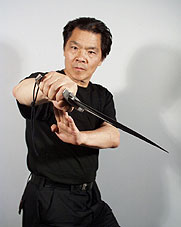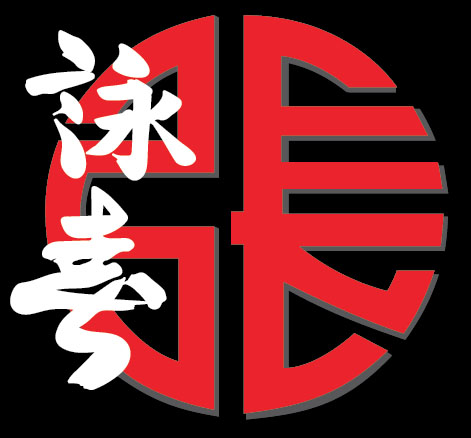Cheung’s Tactital Defense

Think back in time. The First Emperor of China, General Kwan (Kwan Kung), Alexander the Great, Julius Caesar, Genghis Khan, Napoleon… The First Emperor of China was able to subjugate millions of people under his one rule, where for thousands of years before, there were small warlords and bandit groups in separate enclaves all fighting each other for small claims of power. General Kwan attained god-like status through his ferocious fighting abilities. His skills were so great that it is said that he was able to defeat five generals together during one encounter.Alexander the Great deserved his title by conquering army after army, one right after the other. His vast empire extended throughout Europe, the Middle East and Asia. Genghis Khan and his Mongol hordes never lost in battle as they swept over the mountains and plains of Asia. And Napoleon, for all his supposed madness, was able to create enough unity and support for his cause in a time when France and Europe were embroiled in treachery, deceit and rebellion.All of these great leaders had something in common — the ability to apply their martial arts concepts successfully in real warfare situations. These men all realised that the most important attributes to winning, whether it be against an individual or against an entire army, were:
- The Heart
- The Eyes
- Balance
- Skills
- Combative Tactics
Although conventional warfare as such, no longer exists in this day of lasers, nuclear missiles and other modern weapons of mass destruction (known as WMD), War (whether urban or international in scale) is still waged by people. So the proper training of personnel is the key to successful military operations or law enforcement. This is where martial arts still holds the key to success in today’s environment of high-technology warfare.Traditional Wing Chun Grandmaster William Cheung first realised this during his work with US Marines and the Navy Seal Team of the US 7th Fleet based in Japan from 1978 to 1980. It was during this time that Cheung began to develop concepts for his CTD (Cheung’s Tactical Defense) Program.Cheung’s Tactical Defense (CTD) is an integrated system incorporating existing techniques and procedures directed towards the safety of those employed in law enforcement. The ultimate objective of the program is to furnish the Agent (Operative) with the necessary “tools” which he can use in life-threatening situations.CTD is designed to integrate with the existing Programs of Tactical Training and Procedures of Law Enforcement Agencies. Therefore, CTD encourages students to utilise techniques in combination with what they have previously learned.Most of all, CTD is a concept designed to enhance defensive tactical techniques and skills for Law Enforcement, and therefore can be learned in a short time. Since CTD deals with the most dangerous portion of law enforcement procedures, the taking control and custody of another human being, this program is designed to help get the job done with minimum risk.If we return to those time-tested attributes of successful warriors, we can see that Grandmaster Cheung has incorporated them for use yet again in modern-day situations.The Heart – One must want to WIN and stay PERFECTLY CALM in crisis. Cheung’s Chi Meditation Program is most effective in controlling the heart rate in combat stress situations. A study by Martens, 1977, on combat stress situations shows there is a loss of fine motor skills at 115 beats per minute (BPM). Loss of complex motor skills like hand-eye coordination, timing and tracking occurs at 145 BPM. During the Chi Meditation, the heart rate and blood pressure slow down; the body becomes relaxed. Once this is mastered, one can reproduce this phenomenon in a survival stress environment. One then has more or better options to deal with the problem(s) at hand.The Eyes – Physiologically, the eyes suffer greatly from stress situations. Pupils dilate and vision becomes more binocular dominant. A 70-80% field loss of peripheral vision occurs. Loss of depth perception, near vision and night vision is also evident (Martens, 1977). Cheung’s eye-training program specifically addresses such problems and teaches one ways to improve and enhance visual focussing and tracking skills, even under stressful situations. His Eye Development Program enables one to improve the vision on static and moving objects by more than 200% in only a short period of time.The Balance – Good balance is a prerequesite for skilful manoeuvring. In Traditional Wing Chun footwork, Cheung insists on a 50-50 weight distribution at all times. This will allow one to be able to move either foot at any time. Good balance is also energy preserving.Skills and Combative Tactics – Cheung’s application of skills and combative tactics is an extension of the B.O.E.C. (Balance, Opening, Elbow, arms Crossed) Principles that he teaches in Traditional Wing Chun Kung Fu.The BOEC principles first advocate not fighting the strengths of the opponent, rather fight the weaknesses. If there is a weakness in the opponent’s balance, that’s where you attack. If there is a weakness in an opening, attack there. Control the opponent’s elbow if an opportunity arises, as that will create an advantage. Arms crossed will also provide an opening from which an operative can secure an advantage as well.In utilising the BOEC Fighting System, neither tremendous speed nor strength is required. BOEC relies on position as an advantage. This way the exponent will be able to use two arms, but the opponent will have only the use of one. This is known as controlling the Blind Side.Controlling the opponent’s lead arm is called controlling the Blind side. This allows one to stay at maximum distance from the opponent’s other arm. Therefore one would only have to deal with one effective arm from the opponent at a time. Fighting on the blind side provides a logical way for one to attack the opponent’s balance by controlling the elbow.When attempting to control the Blind side, be sure to make contact on the elbow or below the elbow, but not above the elbow – in that case, the arm is still free. Controlling the elbow will control the balance of the opponent. If you push or pull on the opponent’s elbow, his balance will be adversely affected.This leads to trapping the opponent’s arms when they are crossed to effectively control his balance and create openings for pressure point strikes for instant disablement. As you can see, the BOEC principles are an ideal choice for dealing with close quarter combat (CQC) situations that often occur in law enforcement.Balance – When you attack the balance of your opponent, or put him off balance, he will be likely to offer openings, or targets.Opening – While the exponent is standing on the blind side and attacking the openings, the opponent will be forced to protect the openings, leading him to commit to do the wrong thing (cross arms). Some people might stand with arm along side, offering a lot of target areas, trying to set a trap. Choosing the target to hit is vital. The exponent should attack near the elbow, restricting the lead arm . If the elbow itself is exposed, it then becomes the target.Elbow – When the elbow is exposed, exponent can control the elbow, hence the opponent’s balance and create more openings.Arms Crossed – When the opponent has his elbow trapped from the blind side, most likely he will defend the immediate target, resulting in crossed arms. He will be forced into making one or more of the following errors:1. blocking crossed arm;2. leaning back, thus losing balance;3. exposing more vital targets.When the opponent has Crossed arms, the exponent can pin both arms, leaving the opponent virtually defenceless.The eyes of the exponent should be constantly observing, detecting and assessing the weaknesses of the opponent in accordance to the BOEC system. Only then can he exploit these weaknesses and take full advantage of the opponent’s mistakes.While Cheung’s CTD Program is slanted towards law enforcement training, the basic configuration also lends itself to military Special Operations Forces as well as to Paramilitary training. This has led to Grandmaster Cheung’s recent alliance with the people of Global Studies Group, Inc. (GSGI).It has created the latest development in the practical application of martial arts, in this case, Traditional Wing Chun, for use in training procedures and programs for Special Warfare and Special Reaction Teams. The majority of GSGI’s programs are geared toward training-the-trainers, which are modelled after the Domestic Preparedness Training Initiative, which focuses specifically on the enhancement of crisis management capabilities for groups and organisations responding to criminal and/or terrorist activities.Along with Grandmaster Cheung, the personnel who comprise Global Studies Group, Inc. (GSGI) are all most qualified and the blend is well suited for the task at hand:Mr. Harry Humphries – The founder of GSGI. A former Navy Seal with extensive combat and counter terrorism experience. He is a leading authority in Weapons of Mass Destruction (WMD) threat awareness and crises management procedures. Humphries is currently participating in the “Master Instructor Program”, Police Training Institute, Illinois University. He is a former instructor of Advanced SWAT Hostage Rescue Training at Eastern Michigan University and is a former GUNSITE Training Center Adjunct Instructor (Tactical Operations). Humphries has also starred in movies such as “The Siege”, “The Rock”, “Con Air” and “GI Jane”, as well as being responsible for the combat choreography for those films.Lt. Commander (Ret.) Scott Lyon – 30 years experience in the US Navy. Trained as instructor in UDT/SEAL BUDS. As a member of a Special Warfare Group, he has led men in over 300 combat raids and missions in three different combat theatres, including the first liberation of 28 POW’s in Vietnam in 1968. He was decorated 28 times which made him one of the most decorated servicemen in the U.S.Commander (Ret.) Richard Marcinko – 30 years experience in the US Navy. The Founder and Head of SEAL TEAM SIX. He has authored many books on his exploits in the Navy Seals as well as a New York Times business bestseller, “The Rogue Warrior’s Strategy for Success: A Commando’s Principles of Winning”. Marcinko runs a private security firm whose clients include governments and corporations. He also heads a motivational training and team-building company.It is interesting to note, given the qualifications of all persons connected with this alliance, that it has come to fruition at this time. Many police and military administrators have downplayed the use of traditional martial arts in their training methods for many years. They would say that (traditional martial arts) are not realistic in their approach or their training, often that they’re just a sport. Or comments like ‘they’re too complex to learn quickly’ or ‘too hard to incorporate with the rest of our program’.For Grandmaster William Cheung to convince these highly-qualified, professional warriors of the continuing need for traditional martial arts to play a part in the successful defence of neighbourhoods, cities and even countries is a solid step for all martial arts practitioners. Even in today’s environment of guns, missiles and nuclear weapons, traditional martial arts still plays a major role in the continuance of our survival.
